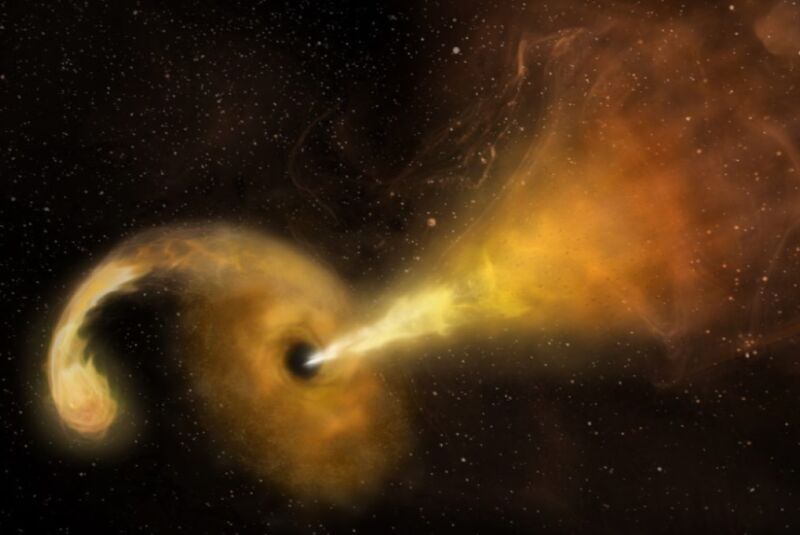Radio astronomers scouring the archives spotted black hole devouring a star

There are decades of radio astronomy data in the archives of the National Radio Astronomy Observatory (NRAO), and there are still new discoveries lurking within it. Astronomers have spotted the telltale signature jet from a black hole devouring a star several decades ago in archival data collected by the Very Large Array (VLA) telescope in New Mexico. According to a new paper published in The Astrophysical Journal, it’s only the second such candidate event discovered in the radio regime; the first was discovered in 2020. The discovery was presented virtually yesterday at a meeting of the American Astronomical Society.
As we’ve reported previously, it’s a popular misconception that black holes behave like cosmic vacuum cleaners, ravenously sucking up any matter in their surroundings. In reality, only stuff that passes beyond the event horizon—including light—is swallowed up and can’t escape, although black holes are also messy eaters. That means that part of an object’s matter is actually ejected in a powerful jet.
If that object is a star, the process of being shredded (or “spaghettified”) by the powerful gravitational forces of a black hole occurs outside the event horizon, and part of the star’s original mass is ejected violently outward. This in turn can form a rotating ring of matter (aka an accretion disk) around the black hole that emits powerful X-rays and visible light—and sometimes radio waves. Those jets are one way astronomers can indirectly infer the presence of a black hole. They’re known as “tidal disruption events” (TDEs).
For instance, astronomers in 2018 announced the first direct image of the aftermath of a star being shredded by a black hole 20 million times more massive than our Sun. The encounter took place in a pair of colliding galaxies called Arp 299 about 150 million light years from Earth. The astronomers used a combination of radio and infrared telescopes, including the Very Long Baseline Array (VLBA), to follow the formation and expansion of the jet of matter. The matter was ejected in the wake of a star being shredded by a supermassive black hole at the center of one of the colliding galaxies.
Astronomers found another TDE in 2020 (dubbed AT 2019qiz), which provided the first direct evidence that outflowing gas during disruption and accretion produces the powerful optical and radio emissions previously observed.
However, these powerful bursts of light are often shrouded behind a curtain of interstellar dust and debris, making it difficult for astronomers to spot or study them in greater detail using optical or X-ray telescopes. “This study demonstrates the power of radio surveys to discover TDEs,” said co-author Vikram Ravi of Caltech, by…
Read More: Radio astronomers scouring the archives spotted black hole devouring a star
